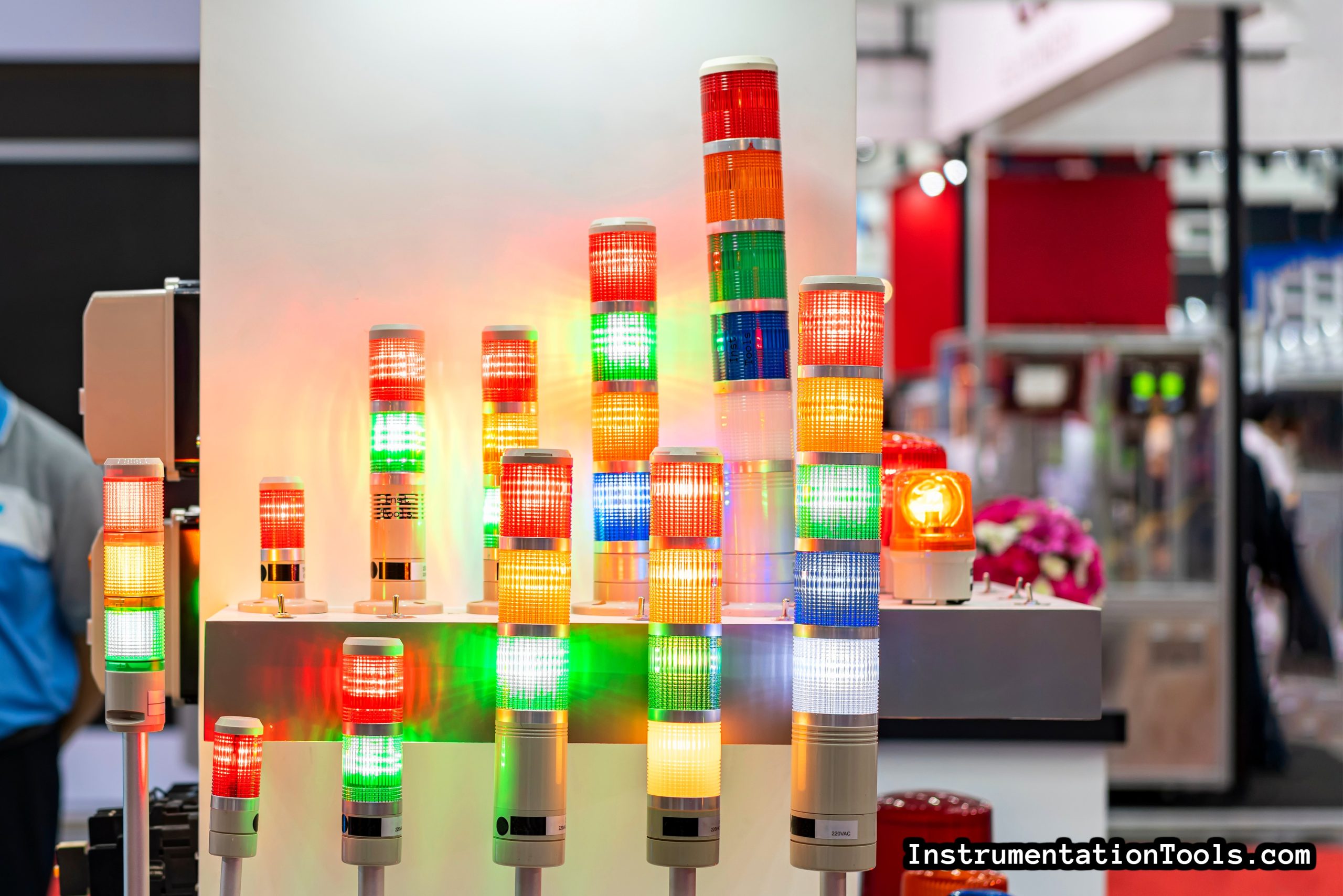In this post, we will learn the use of a light tower or tower lamp in industrial automation.
Tower lamps are an integral part of industrial automation. You must have seen electrical panels or HMI console boxes on which this lamp is mounted.
Basically, visual representation is always a great sign for operators to see the state of the machine. Audio hooters will only sound when there is an alarm or warning, but these lamps show different states of the machine.
This helps the operator to see even from far the system condition. In this post, we will see the use of tower lamps or light tower in industrial automation.
Tower Lamp is a columnar structure of lights stacked upon each other. Normally, they are comprised of four to five lights of different colors.
The most common ones used are red, amber, yellow, and green. Each individual lamp can be considered as a relay that is turned on or off by PLC or other such controllers. According to the logic written, these lamps are controlled by the program.

If you see the colors used, let us understand the purpose of each color. The red color glows when there is an alarm in the system.
The yellow color glows when there is any initial warning in the system. Amber color glows when the system is in stop condition, without any alarms in the system.
The green color glows when the system is running.
Some tower lamps also come with an audio buzzer. This buzzer is also controlled by the PLC program. It is turned on when there is an alarm in the system.
Refer to the below image for developing a PLC program related to the tower lamp.
Some of the advantages of tower lamp are as follows:
Watch the below example video about Tower Lights plc programming.
Follow the below key points for the selection of a tower lamp for industrial automation systems.
In this way, we understand the concept of tower lamps in industrial automation.
If you liked this article, then please subscribe to our YouTube Channel for Electrical, Electronics, Instrumentation, PLC, and SCADA video tutorials.
You can also follow us on Facebook and Twitter to receive daily updates.
Open Telemetry is a framework for collecting data in cloud-native applications including tracing, metrics, and…
This article is about controlling the Pneumatic cylinder and Pneumatic motor in the assembly line…
In this post, we will learn the basic requirements for a network switch to be…
The PLC panel and MCC panel interface signals are start, stop, run feedback, trip, local…
In this article, we are going to discuss about shutter door control using induction motor…
Electrical Drives control the motion of electric motors. Motion control is required in industrial and…
View Comments
Great article on tower lamps and their importance in industrial automation. Clear and concise explanation of their features and functions. Thank you for sharing this informative piece!